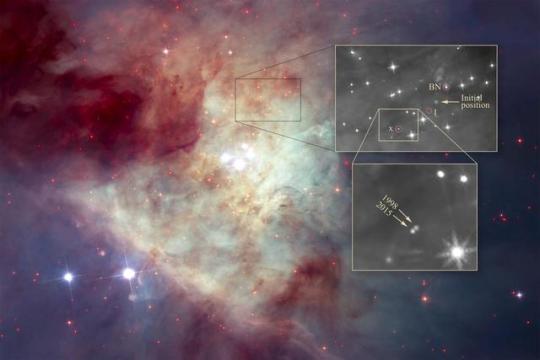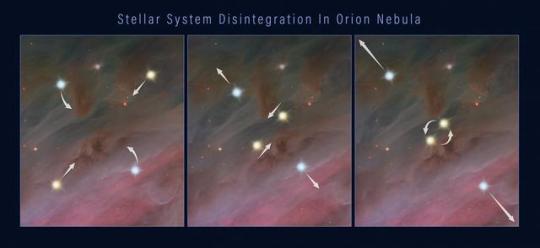#James Kleinmann
Text
Exclusive Interview: Fellow Travelers stars Noah J. Ricketts & Jelani Alladin "this miniseries is a revolution"
Ron Nyswaner’s exquisitely crafted work of queer historical fiction, Fellow Travelers, is a compelling and deeply moving epic miniseries that takes in the Lavender Scare of the 1950s and follows its repercussions in the lives of those directly affected through the following decades, taking in the post-Stonewall period of liberation in the 70s up to the devastation of the onset of HIV/AIDS in the…

View On WordPress
#black gay actors#black gay characters#Black gay history#Black queer#black queer actors#black queer chacaters#black queer history#fellow travelers interview#fellow travelers Paramount plus#fellow travelers showtime#fellow travellers#fellow travlers paramount+#fellow travlers the queer review#gay#gay history#gay miniseries#gay television#interview fellow travlers#James Kleinmann#jealni alladin#jelani alladin fellow travlers interviews#jelani alladin interview#jelani alladin the queer review#jonathan bailey#lgbt#lgbtq#LGBTQ history#LGBTQ Paramount Plus#lgbtq showtime#LGBTQ TV series
8 notes
·
View notes
Photo

F***ED IN THE HEAD now available on demand 11/11/22. here: https://vimeo.com/ondemand/fith
4 notes
·
View notes
Text
Stephen Fry on his roles in The Sandman, V for Vendetta, Heartstopper, Peter's Friends & It's A Sin
In a wide-ranging interview, Stephen Fry speaks exclusively with The Queer Review's editor James Kleinmann about how he first ...
via YouTube https://www.youtube.com/watch?v=-Z8JthB0J5Y
3 notes
·
View notes
Photo






🧛
#this is what ive been occupying myself with#idk if the period costuming is accurate but#</3#my art#my ocs#libera jastrowa#maral ohanyian#mia kleinmann#edel veice#sujani nandasiri#james howe#irene van helsing
14 notes
·
View notes
Photo

Searchers
Directed by Pacho Velez | 81 minutes | 15+ | Australian Premiere
1:40pm, Sunday December 5 | Buy Tickets | Buy Passes
Fresh from Sundance, Searchers explores dating, relationships and loneliness in the age of dating apps, made all the more poignant in a post-COVID era.
New Yorkers of different races, genders, ages, social classes, and sexual preferences, search for their special someone in the dating-app age. The film unfolds online; the interviewees, including the director himself, wade through various platforms, narrating their decision-making process, with text and graphics from each application overlaid on-screen. An exploration of loneliness and companionship in our increasingly digitized era.
“As the film progresses what emerges is an expansive and rather mesmeric meditation on contemporary dating.”- James Kleinmann, The Queer Review
Festivals: Sundance, Visions du Réel
Year: 2021
Language: English
Screens with: Stump The Guesser
0 notes
Photo

Searchers
Directed by Pacho Velez | 81 minutes | 15+ | Australian Premiere
1:40pm, Sunday December 5 | Buy Tickets | Buy Passes
Fresh from Sundance, Searchers explores dating, relationships and loneliness in the age of dating apps, made all the more poignant in a post-COVID era.
New Yorkers of different races, genders, ages, social classes, and sexual preferences, search for their special someone in the dating-app age. The film unfolds online; the interviewees, including the director himself, wade through various platforms, narrating their decision-making process, with text and graphics from each application overlaid on-screen. An exploration of loneliness and companionship in our increasingly digitized era.
“As the film progresses what emerges is an expansive and rather mesmeric meditation on contemporary dating.”- James Kleinmann, The Queer Review
Festivals: Sundance, Visions du Réel
Year: 2021
Language: English
Screens with: Stump The Guesser
0 notes
Video
youtube
Ahead of its screening TONIGHT at Outfest, The Queer Review's editor James Kleinmann sat down with Shit & Champagne writer-director and star D'Arcy Drollinger to talk about its stage show origins and adapting it for the screen, capturing the 70s vibe, his approach to comedy and more! 💋
WATCH: 👉 https://youtu.be/9OfqZmTv6po
NEW VENUE! SHIT & CHAMPAGNE screens TONIGHT at 8:30pm, with a live-pre-show with cast and crew in attendance.
Get your tickets: �� https://bit.ly/3lnU456
0 notes
Photo

Searchers
Directed by Pacho Velez | 81 minutes | 15+ | Australian Premiere
3:50pm, Sunday November 28 | Buy Tickets | Buy Passes
Fresh from Sundance, Searchers explores dating, relationships and loneliness in the age of dating apps, made all the more poignant in a post-COVID era.
New Yorkers of different races, genders, ages, social classes, and sexual preferences, search for their special someone in the dating-app age. The film unfolds online; the interviewees, including the director himself, wade through various platforms, narrating their decision-making process, with text and graphics from each application overlaid on-screen. An exploration of loneliness and companionship in our increasingly digitized era.
“As the film progresses what emerges is an expansive and rather mesmeric meditation on contemporary dating.”- James Kleinmann, The Queer Review
Festivals: Sundance, Visions du Réel
Year: 2021
Language: English
Screens with: Blue Honda Civic
0 notes
Text
Guys… Jared Kleinmann is the James Potter of musical theater…
#harry potter#dear evan hansen hogwarts headcannon#hogwarts#jared kleinman#sincerely three#evan hansen#dear evan hansen#connor murphy
28 notes
·
View notes
Quote
When I used to be a scriptwriter writing sketches for TV, often, the note you'd get was, "It's too clever". ... I don't think you should ever use that as a reason to cut something out.
Jemaine Clement, “Jemaine Clement Interview - Rio 2″, interview with James Kleinmann for HeyUGuys, Apr. 8, 2014.
10 notes
·
View notes
Photo

LDR a short film by James Kleinmann is now available on demand here.
1 note
·
View note
Text
Mike Ruiz takes leathermen into the metaverse with NFT drop
Mike Ruiz takes leathermen into the metaverse with NFT drop
Celebrity and fashion photographer Mike Ruiz, continues to expand his his ongoing portrait series focusing on the beauty and diversity of the leather community, by taking leathermen into the metaverse. On June 5th, Ruiz will be dropping a series of 100 portraits from his leathermen project as NFTs.
“With the metaverse gaining momentum and art being tokenized digitally”, Ruiz told The Queer…

View On WordPress
#gay#gay leather#gay leather photography#gay metaverse#James Kleinmann#leather#leather daddy#leather daddy art#leather dady#leather gay#leather history#leather man#leather man community#leather men#leather men photography#leather photography#leatherman#leatherman community#leathermen#leathermen metaverse#leathermen photography#letahermen metaverse#lgbt#lgbtq#LGBTQ metaverse#Mike Ruiz#Mike Ruiz Drag Race#Mike Ruiz interview#Mike Ruiz leather#Mike Ruiz leather man
155 notes
·
View notes
Photo

LDR a short film by James Kleinmann is now available on demand here.
https://vimeo.com/ondemand/ldr
4 notes
·
View notes
Photo

The astronomer then looked at the star's previous locations, projecting its path back in time. He realized that in the 1470s source x had been near the same initial location in the Kleinmann-Low Nebula as two other runaway stars, Becklin-Neugebauer (BN) and "source I."
BN was discovered in infrared images in 1967, but its rapid motion wasn't detected until 1995, when radio observations measured the star's speed at 60,000 miles per hour. Source I is traveling roughly 22,000 miles per hour. The star had only been detected in radio observations; because it is so heavily enshrouded in dust, its visible and infrared light is largely blocked.
The three stars were most likely kicked out of their home when they engaged in a game of gravitational billiards, Luhman said. What often happens when a multiple system falls apart is that two of the member stars move close enough to each other that they merge or form a very tight binary. In either case, the event releases enough gravitational energy to propel all of the stars in the system outward. The energetic episode also produces a massive outflow of material, which is seen in the NICMOS images as fingers of matter streaming away from the location of the embedded source I star.
Future telescopes, such as the James Webb Space Telescope, will be able to observe a large swath of the Orion Nebula. By comparing images of the nebula taken by the Webb telescope with those made by Hubble years earlier, astronomers hope to identify more runaway stars from other multiple-star systems that broke apart.
The Hubble Space Telescope is a project of international cooperation between NASA and ESA (European Space Agency). NASA's Goddard Space Flight Center in Greenbelt, Maryland, manages the telescope. The Space Telescope Science Institute in Baltimore conducts Hubble science operations. STScI is operated for NASA by the Association of Universities for Research in Astronomy, Inc., in Washington, D.C.
2 notes
·
View notes
Photo





oh yeah, i totally have vampire ocs
#i realzed i never posted them here#happy late halloween#bark bark#edel veice#libera jastrowa#maral ohanyian#mia kleinmann#sujani nandasiri#james howe#my art#my ocs
8 notes
·
View notes
Photo



Speeding star gives new clues to breakup of multi-star system A remarkable new discovery using NASA's Hubble Space Telescope reveals three stars that now hold the record as the youngest-known examples of a super-fast-flying breed. "Until these observations, only a few -- but older -- examples of such rapidly-moving stars had been found with origins traceable back to the volatile systems that likely ejected them," said lead researcher Kevin Luhman of Penn State University. "The new Hubble observations provide very strong evidence that these three stars were ejected from an unstable multi-star system." The new discovery is published in this month's Astrophysical Journal Letters. "Based on infrared images, these three stars appear to be only a few hundred thousand years old -- young enough to have disks of material left over from their formation," Luhman said. During the mid 1400s, these three young stars likely were in a gravitational battle with each other that ended when the system exploded, ejecting its stars at high speeds in different directions. Two of the three stars were discovered during the past few decades -- hundreds of years after they were catapulted out of their original unstable system -- but only after infrared and radio observations became advanced enough to penetrate the thick dust inside the Milky Way's Orion Nebula. These earlier observations showed that the two stars were traveling at high speed in opposite directions from each other. Previously, astronomers had traced the paths of the two oppositely speeding stars, finding that they had been in the same location 540 years before. This discovery suggested they were part of a now-defunct multiple-star system in the Orion Nebula. But the duo's combined energy propelling them outward didn't add up. The previous researchers calculated that the energy of at least one other star was needed to blast itself away and also the two oppositely speeding stars. The astronomers led by Luhman followed the path of the newly discovered star, and found that it traced back to the same location where the two previously known stars were located 540 years ago. The speeding trio are in a small region of young stars called the Kleinmann-Low Nebula, near the center of the vast Orion Nebula complex, 1,300 light-years from Earth. All three stars are flying extremely fast on their way out of the Kleinmann-Low Nebula, up to nearly 30 times faster than most of the nebula's other stars. Luhman stumbled across the third speedy star, called "source x," while he was hunting for free-floating planets in the Orion Nebula as a member of an international team led by Massimo Robberto of the Space Telescope Science Institute in Baltimore, Maryland. The team used the near-infrared vision of Hubble's Wide Field Camera 3 to conduct the survey. "Very few examples of such stars have been observed, especially in very young clusters," Luhman said, even though computer simulations had led astronomers to predict that these gravitational tug-of-wars would occur in young clusters, where newborn stars are crowded together. During the analysis, Luhman was comparing the new infrared images taken in 2015 with infrared observations taken in 1998 by the Near Infrared Camera and Multi-Object Spectrometer (NICMOS). He noticed that "source x" had changed its position considerably over 17 years in Hubble images relative to nearby stars, indicating that "source x" was moving unusually fast, about 130,000 miles per hour. Luhman then looked at the star's previous locations, projecting its path back in time. He realized that, in the 1470s, "source x" had been near the same initial location in the Kleinmann-Low Nebula as the two other runaway stars, named Becklin-Neugebauer (BN) and "source I." "All three stars were most likely kicked out of their home when they engaged in a game of gravitational billiards," Luhman said. What often happens when a multiple system falls apart is that two of the stars move close enough to each other that they either merge or they form a very tight pair. In either case, their coming together releases enough gravitational energy that it propels all of the other stars in the system outward. The energetic episode also produces a massive outflow of material, which we see in Hubble's infrared NICMOS images as fingers of matter streaming away from the location of the "source I" star. Previous studies suggested that this material points to "source I" as the instigator in the system's breakup. "It's very obvious when you look at the infrared NICMOS images that there are these fingers of emission emanating from "source I" in the center of the Kleinmann-Low Nebula, where the interaction occurred," Robberto said. "These are jets of material, just like the jets fired off by young stars, except that the outflow here is much more explosive and on a much larger scale than you typically see from a young star." The BN star was discovered in infrared images in 1967, but its rapid motion wasn't detected until 1995, when radio observations measured the star's speed at 60,000 miles per hour. "Source I" is travelling roughly 22,000 miles per hour. The star had been detected only in radio observations because it is so heavily enshrouded in dust that all of its visible and infrared light is blocked. Future telescopes, such as the James Web Space Telescope being build by NASA, will be able to observe a large swath of the Orion Nebula. By comparing images of the nebula taken by this future telescope with those made by Hubble years earlier, astronomers hope to identify more runaway stars from exploded multiple-star systems. ### This research received financial support with grants from the National Science Foundation and the Space Telescope Science Institute. TOP IMAGE....This view of the center of the Orion Nebula reveals the home of three speedy, wayward stars that were members of a now-defunct multiple-star system. The stellar grouping broke apart 500 years ago, flinging the three stars out of their birthplace. The image, taken by NASA's Hubble Space Telescope, combines observations taken in visible light and in near-infrared light. A grouping of hefty, young stars, called the Trapezium Cluster, is at the center of the image. Several hundred stars are sprinkled throughout the image. Many of them appear red because their light is being scattered by dust. The box just above the Trapezium Cluster outlines the location of the three stars. A Hubble close-up view of the stars is shown at top right. The birthplace of the multi-star system is marked "initial position." Two of the stars -- labeled BN, for Becklin-Neugebauer, and "I," for source I -- were discovered decades ago. Source I is embedded in thick dust and cannot be seen. The third star, "x," for source x, was recently discovered to have moved noticeably between 1998 and 2015, as shown in the inset image at bottom right. Source x is traveling at an unusually high speed of 130,000 miles per hour, which is 30 times faster than the velocity of most stars in the nebula. Astronomers found the speedy source x by comparing observations taken in 1998 by the Near Infrared Camera and Multi-Object Spectrometer with those taken in 2015 by the Wide Field Camera 3. Hubble's discovery of the high velocity of source x has helped astronomers solve the long-standing mystery of how the stars BN and source I acquired their fast motions. Credit NASA, ESA, K. Luhman (Penn State University), and M. Robberto (STScI) CENTRE IMAGE....Scale and compass image shows the Orion Nebula. Credit: NASA, ESA, and STSci LOWER IMAGE....This three-frame illustration shows how a grouping of stars can break apart, flinging the members into space. The first panel shows four members of a multiple-star system orbiting each other. In the second panel, two of the stars move closer together in their orbits. In the third panel, the closely orbiting stars eventually either merge or form a tight binary. This event releases enough gravitational energy to propel all of the stars in the system outward, as shown in the third panel. Credit NASA, ESA, and Z. Levy (STScI)
8 notes
·
View notes